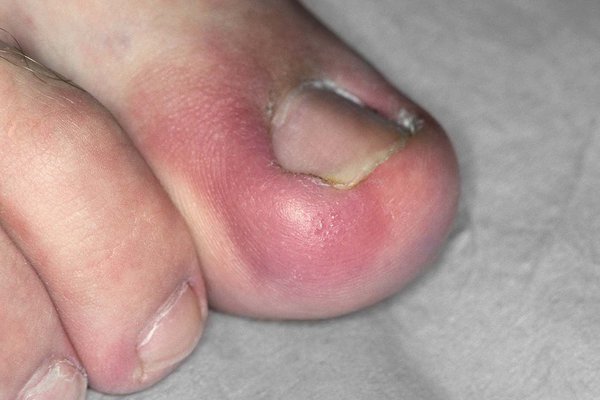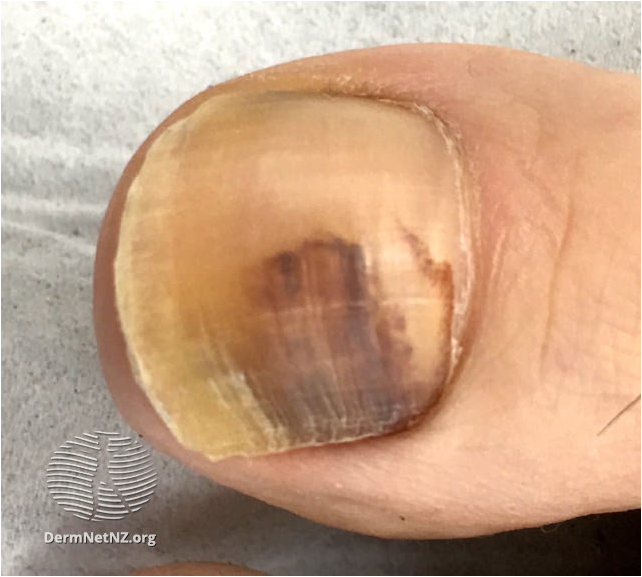10 common nail diseases (with photos)
Below are the 10 most common nail diseases.
1. Brittle nails

Brittle nails are common. Here are some causes.
- Ageing: Brittle nails are a common result of aging.
- Chronic medical conditions: Iron or zinc deficiency, thyroid disease, anaemia, or anorexia nervosa/bulimia
- Nail habits: Overuse of nail polish, manicures, nail polish remover, harsh soaps, and detergents
- Trauma: Repeated trauma to the nails can cause splitting and softening.
- Wetting and drying: Repeated wetting and drying of the hands can make nails expand and shrink, leading to brittleness. This is often worse in low humidity and in the winter.
2. Ingrown toenail

An ingrown toenail is a common problem where the nail grows into the toe.
3. Koilonychia (‘spoon’ nails)
:max_bytes(150000):strip_icc():format(webp)/VWH-DermnetNZ-Koilonychia-Spooning-01-669aac78a66644eb8b6d1d125541766b.jpg)

This is a deformity of the nails where the central portion of the nail is depressed and the lateral aspects of the nail are elevated. It can be due to chronic iron deficiency anaemia, secondary to malnutrition, worms, coeliac disease, gastrointestinal blood loss, and malignancy.
4. Leukonychia
This is most commonly caused by minor injuries, such as nail biting, or may occur while the nail is growing. It also may be caused by calcium deficiency, and hypoalbuminaemia of chronic liver disease (see below).
5. Nicotine stained nails

Nicotine stained distally, but not proximally with clear line of demarcation. May also appear when patient switches to ‘lower tar’ tobacco.
6. Onycholysis (nail lifting up)

There are several causes:
- Fungal infection
- Ageing
- Psoriasis
- Injury from an aggressive manicure
- Injury form cleaning under nails with a sharp object.
7. Onychomycosis

A fungal nail infection. There are various types. Above is superficial white onychomycosis, typically caused by T. interdigitale or
C. albicans.
8. Paronychia

Inflammation of the nail folds – red, swollen, often tender. Frequent immersion in water a risk factor for chronic paronychia.
9. Pitting

Non-specific sign for psoriasis (additional signs include onycholysis, thickening, and ‘oilspot’ lesions which are yellow patches on the nail).
10. Subungual haematoma (bleeding under nail)

History of trauma (though may not be remembered). Discolouration migrates with nail growth, with clearance of proximal nail bed with time. Discolouration is usually red or red/black but not brown. No treatment is required.
Summary
We have described the 10 most common nail diseases (with photos). We hope it has been helpful.


